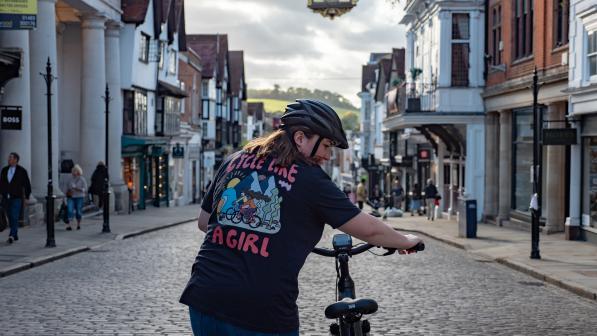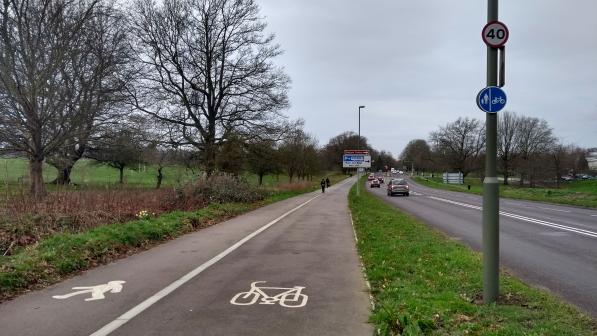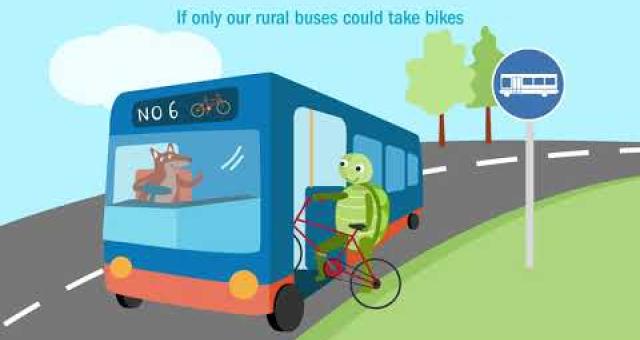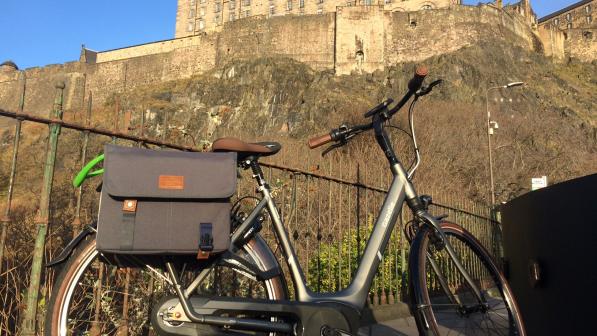Make everyday journeys easier with 20-minute neighbourhoods

At Cycling UK, we encourage and support more people to cycle for short everyday journeys – to school, the shops, library, doctor’s surgery, the sports pitch – any of the places we need to get to in our local area.
Many people simply reach for the car keys to make those journeys right now.
For example, in Scotland, statistics show that over half (54%) of journeys under 5km (3 miles) and a quarter of journeys under 1km are done by car.
There are numerous reasons why so many short journeys are made by car, but one is the way our neighbourhoods have been planned and developed over the years.
Too often, housing developments don’t have nearby shops or services, and many town centres have suffered with the rise of out-of-town developments.
The concept
The 20-minute neighbourhood concept aims to change planning and transport polices to ensure that more people can access the services within a 10-minute walk or 7-minute cycle from home.
Cycling UK supports the concept of the 20-minute neighbourhood - making trips to key local services shorter and safer would be a key way to encouraging more people to cycle regularly
Jim Densham, Cycling UK's policy and campaigns manager for Scotland
By bringing services closer to where we live, and making roads safer for walking, cycling and wheeling, the aim is that national and local governments in the UK can make the places where we live more attractive, safer, and close-knit, with better air quality, improved health outcomes and reduced carbon emissions.
Cycling UK supports the concept of the 20-minute neighbourhood - making trips to key local services shorter and safer would be a key way to encouraging more people to cycle regularly.
So far, adoption of the idea by governments in the UK is at a very early stage, although it has been proposed in the Climate Change Plan by the Scottish Government and Newcastle has an action plan which includes the 15-minute city.
There’s a need to understand how best to make the concept a reality, whilst remembering that solutions will vary from place to place.
The changes needed to create 20-minute neighbourhoods in Liverpool will be different to the solutions for small towns like Dunbar, Devises or Dolgellau.
Making the shift
The 20-minute neighbourhood concept fits well with our project work in communities across the UK as we help people get more active.
Our Shift project, which runs in Scotland, does just that, by supporting community groups which want to help people to cycle for short everyday journeys.
Giving people what they need to grow in confidence and cycling capability is a big step to ensuring they can move away from using their car for short journeys.
But in many places we need that behaviour change work to be matched with changes to the physical environment of neighbourhoods.
Those neighbourhoods need safe cycling routes, quieter streets and services within reach.
That's why the 20-minute neighbourhood concept needs to be widely adopted, and not just in our urban areas, this should be the goal for rural towns and villages too.
Until this happens, life could remain frustrating if you want to walk or cycle more but the places you need to travel to on a daily basis are too distant.
I’m relatively lucky, where I live in the Southside of Glasgow as within a 10-minute walk I can get to shops and supermarket, a pharmacy, a café, the barber, the primary school and greenspace.
I can access even more places, such as my Dr’s surgery, if I jump on my bike and go a bit further.
Not everyone is so fortunate but it’s worth taking some time to think about and identify what’s in your 20-minute neighbourhood and within reach on foot or by bike.
Doing so may help you realise that some places aren’t as far away as you thought and encourage you to drive less for local journeys, get more active and reduce your personal carbon footprint.
You’ll also be prepared when your local council seeks opinions about local services, developing neighbourhoods and local roads.
Creating 20-minute neighbourhoods will take time and involve change to people’s lives.
It won’t be quick or easy to bring together the services people rely on within these 20-minute zones. However, local and national government can start now by creating cycle lanes, improving pavements and slowing traffic speeds in built up areas.
More information on 20-minute neighbourhoods
- Sustrans – What is a 20-minute neighbourhood?
- Town and Country Planning Association - The 20-minute neighbourhood includes a guide for planners
- Love your local – a personal take on creating a 20-minute neighbourhood in East Lothian, by Cycling UK's head of development in Scotland, Suzanne Forup
- ClimateXchange - 20-Minute Neighbourhoods in a Scottish Context – a more in depth study
- Place Based Carbon Calculator – a blog explaining a carbon calculator which includes data on 15-minute neighbourhoods in England.
- Plan Melbourne – 20-minute neighbourhoods – an example from Australia.



